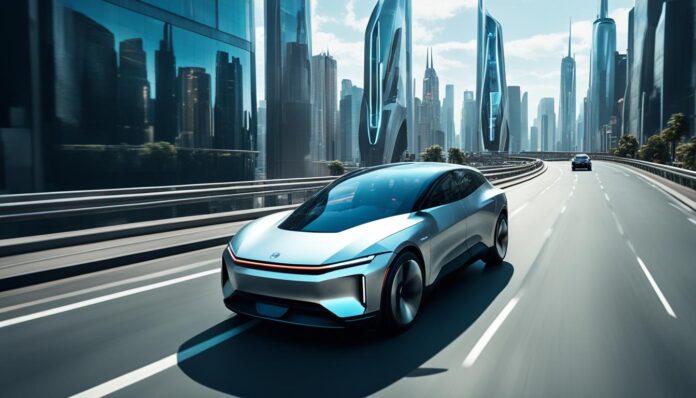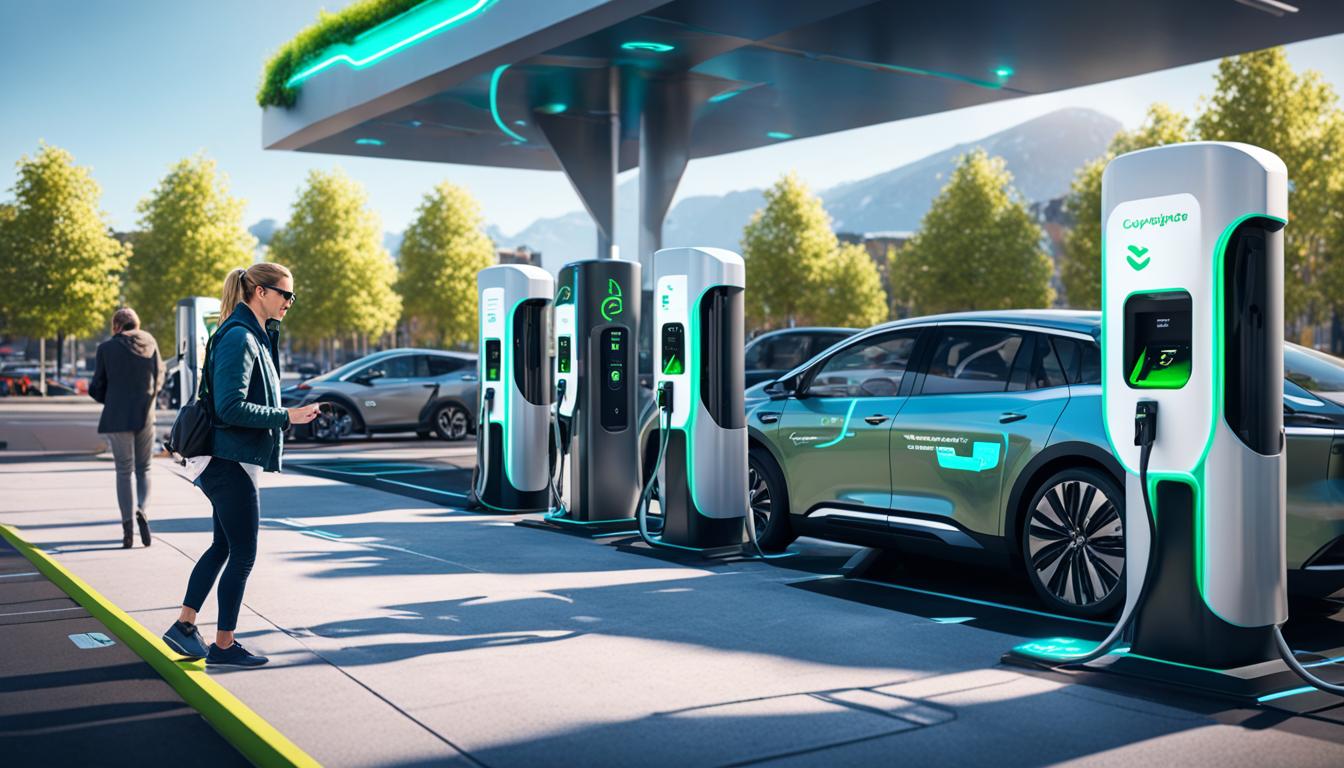
The future of transportation is here, and it’s shaping up to be more sustainable, efficient, and technologically advanced than ever before. With the rapid development of electric vehicles (EVs), autonomous driving technology, and other emerging transportation solutions, the landscape is about to undergo a major transformation. By 2025, you can expect to see significant progress in areas like EV adoption, EV infrastructure development, various levels of autonomous driving, driverless taxis and robotaxis, and autonomous trucking.
Thanks to advancements in technology and a growing awareness of the need for sustainable transportation solutions, a revolution is already underway. But in many cases, these advancements haven’t fully hit the private market yet. Plenty of attention has been given to electric vehicles, automated driving, and micromobility over the last few years, but industry leaders say that there may be a pivotal point of adoption coming very soon. What were once considered futuristic modes of transportation, like electric vertical takeoff and landing (eVTOL) aircraft, may become reality by the end of the decade.
Key Takeaways
- The future of transportation is rapidly evolving, with advancements in electric vehicles, autonomous driving, and other emerging technologies.
- By 2025, you can expect to see significant progress in areas like EV adoption, EV infrastructure development, autonomous driving, driverless taxis and robotaxis, and autonomous trucking.
- Governments, consumers, and businesses are all playing a role in driving the transition to more sustainable and technologically advanced transportation solutions.
- Staying informed about the latest trends and developments, investing in the necessary infrastructure, and embracing new transportation solutions will be key to preparing for the future of transportation.
- The transportation industry is undergoing a major transformation, and those who are proactive and adaptable will be well-positioned to navigate this rapidly changing landscape.
The Rise of Electric Vehicles (EVs)
The electric vehicle (EV) market is poised for rapid growth in the coming years, driven by a combination of rising environmental concerns, consumer demand, and government initiatives. With the Biden administration’s executive order targeting 50% of new vehicle sales to be electric by 2030, the stage is set for a transformative shift in the transportation sector.
Government Initiatives and Targets
In August 2021, the Biden administration announced an ambitious executive order aimed at cutting greenhouse gas emissions. This order set a target for half of all new vehicles sold in the United States to be electric by 2030. While not yet law, this goal has received the backing of major automakers such as GM, Ford, and Chrysler. The growing emphasis on sustainable transportation solutions is reflected in the 114% increase in search volume for related terms over recent years.
Consumer Demand and Adoption Trends
Consumers are also embracing the transition to electric vehicles. A 2023 survey by Deloitte found that while 62% of Americans still plan to purchase a vehicle with an internal combustion engine, 36% intend to choose an EV for their next purchase. In fact, more than one-third of Americans say their next vehicle will be an electric vehicle. Factors such as lower fuel costs and reduced emissions are driving this growing EV adoption trend.
According to an analysis by Bloomberg, the tipping point of EV adoption occurs when EVs make up 5% of new car sales. The United States reached this milestone in the summer of 2022, and Bloomberg’s research suggests EV sales could account for 25% of the market by the end of 2025. Drawing inspiration from Norway’s rapid EV adoption, analysts believe the U.S. could see exponential growth in this sector in the coming years.
EV Infrastructure Development
Despite the increasing demand for electric vehicles, the lack of EV infrastructure remains a concern, especially in rural areas of the United States. As of February 2024, there are more than 61,000 EV charging locations nationwide, with California leading the way. However, the availability of EV charging infrastructure varies significantly across the country.
Charging ports operate at three primary speeds: Level 1 (over 50 hours), Level 2 (4-10 hours), and the faster direct current fast charging (DCFC) (20-60 minutes). Search volume for “DC fast charging” has increased by 185% in the past 5 years, indicating growing consumer interest in this technology. Currently, there are only 40,000 DCFC ports across the entire U.S., and New York City alone is expected to have a shortfall of 40,000 EV ports by 2030, with only 117 DCFC chargers currently in the city. Recent legislation has, however, been pouring money into the EV infrastructure development market, with the goal of creating a nationwide network of 500,000 EV charging stations.

The future of transportation with electric and autonomous vehicles by 2025?
The autonomous driving segment of the transportation industry could generate hundreds of billions of dollars by the end of the decade, according to research from McKinsey. By 2035, revenue from autonomous driving systems could top $400 billion. Fully autonomous vehicles haven’t hit the market just yet, but many self-driving features have already arrived. Things like hands-free steering, adaptive cruise control, and lane-centering steering are examples of lower levels of autonomous driving.
Levels of Autonomous Driving
The U.S. National Highway Traffic Safety Administration has set six levels of autonomous driving to guide future development in this sector. The NHTSA ranks autonomous vehicles depending on necessary human involvement. Level 0 is fully human driving. Level 1 includes things like assisting the driver in braking or accelerating, but not at the same time. The levels increase in complexity and autonomy all the way to Level 5, which is when drivers are never expected to drive. They only intervene if they wish to change something. Current vehicles have reached Level 4, which means they are fully autonomous and will stop themselves in the event of a failure but are still bound by geofencing and adverse weather, but these cars aren’t available to the public.
Driverless Taxis and Robotaxis
Driverless taxis are already on the road. Search volume for “robotaxi” is up 667% in the past 5 years. Amazon’s Zoox and Google’s Waymo are the most popular robotaxis. Zoox first arrived on the streets of San Francisco in February 2023. The taxis travel at a max speed of 35 mph and can carry up to four people. Zoox cars don’t have a front or back but feature two rows of seats opposite of each other. As of right now, Zoox is only available for employees who are traveling between Zoox offices.
Autonomous Trucking
Another critical aspect of the future of autonomous vehicles is driverless trucks. Chinese startup Inceptio Technology is already testing Level 4 autonomous trucks on the roads in China. In the United States, Aurora Innovation is planning to launch fully driverless trucks in Texas by the end of 2024. The company launched autonomous shipping terminals in Dallas in April 2023. A Houston terminal is slated to open in the second half of the year. The trucks in their pilot program are currently hauling 50 truckloads per week with the goal of increasing that to 100 loads by the end of 2023. These trucks are carrying freight for companies like FedEx, Uber Freight, and Schneider. Gatik, a California-based company focused on B2B hauling, is taking a different approach to autonomous trucking by focusing on the miles between stores and micro-fulfillment centers, the “middle mile.” Gatik is investing in short-haul autonomous trucks. Their trucks are small and travel short distances.
Conclusion
The transportation industry is undergoing a transformative shift, with advancements in electric vehicles (EVs), autonomous driving, and other emerging technologies shaping the future. Governments, consumers, and businesses are all playing crucial roles in driving this transition, which is expected to accelerate in the coming years. By 2025, you can anticipate significant progress in areas like EV adoption, EV infrastructure development, various levels of autonomous driving, driverless taxis and robotaxis, and autonomous trucking.
To prepare for this exciting future, it’s essential to stay informed about the latest trends and developments, invest in the necessary infrastructure, and be open to embracing new transportation solutions that can improve efficiency, sustainability, and safety. The future of transportation is here, and those who are proactive and adaptable will be well-positioned to navigate this rapidly changing landscape.
As the transportation industry evolves, it’s crucial to be an active participant in shaping the future. By staying informed, investing in the right technologies, and being open to innovative solutions, you can play a role in creating a more sustainable, efficient, and convenient transportation system for all. The future is bright, and the possibilities are endless.
FAQ
What is the future of transportation with electric and autonomous vehicles by 2025?
Thanks to advancements in technology and a growing awareness of the need for sustainable mobility, a transportation revolution is already underway. By 2025, you can expect to see significant progress in areas like electric vehicle (EV) adoption, EV infrastructure development, various levels of autonomous driving, driverless taxis and robotaxis, and autonomous trucking.
What are the government initiatives and targets for electric vehicles (EVs)?
In August 2021, the Biden administration announced an executive order that would make half of all new vehicles sold in 2030 electric. The overall goal is to cut greenhouse gas emissions. This has received backing from major manufacturers like GM, Ford, and Chrysler.
What are the consumer trends for electric vehicle (EV) adoption?
A 2023 survey from Deloitte reported that 36% of Americans say they’ll choose some variety of EV for their next vehicle. Consumers are drawn to the lower fuel costs and lower emissions associated with EVs. Demand is expected to grow rapidly, with EV sales projected to make up 25% of new car sales by the end of 2025.
What is the current state of electric vehicle (EV) infrastructure development?
As of February 2024, there are more than 61,000 EV charging locations in the United States, with California having the most. However, the lack of EV infrastructure, especially fast-charging stations, continues to be a concern that could slow the transition to electric vehicles, especially in rural areas.
What are the different levels of autonomous driving technology?
The U.S. National Highway Traffic Safety Administration has set six levels of autonomous driving to guide future development. Level 0 is fully human driving, while Level 5 is when drivers are never expected to drive, and the vehicle is fully autonomous. Current vehicles have reached Level 4, which means they are fully autonomous and will stop themselves in the event of a failure, but are still bound by geofencing and adverse weather.
What is the current status of driverless taxis and robotaxis?
Driverless taxis are already on the road, with Amazon’s Zoox and Google’s Waymo being the most popular robotaxis. Zoox first arrived on the streets of San Francisco in February 2023, and the taxis can carry up to four people at a max speed of 35 mph.
What is the state of autonomous trucking?
Chinese startup Inceptio Technology is already testing Level 4 autonomous trucks on the roads in China. In the United States, Aurora Innovation is planning to launch fully driverless trucks in Texas by the end of 2024, with the trucks currently hauling 50 truckloads per week for companies like FedEx, Uber Freight, and Schneider.
